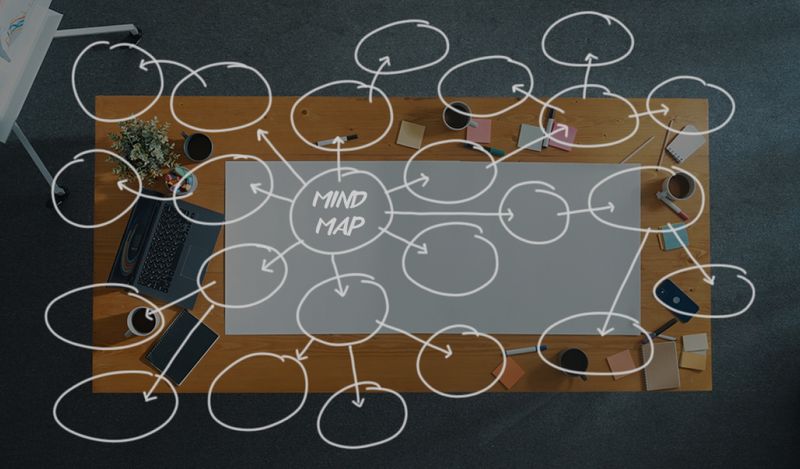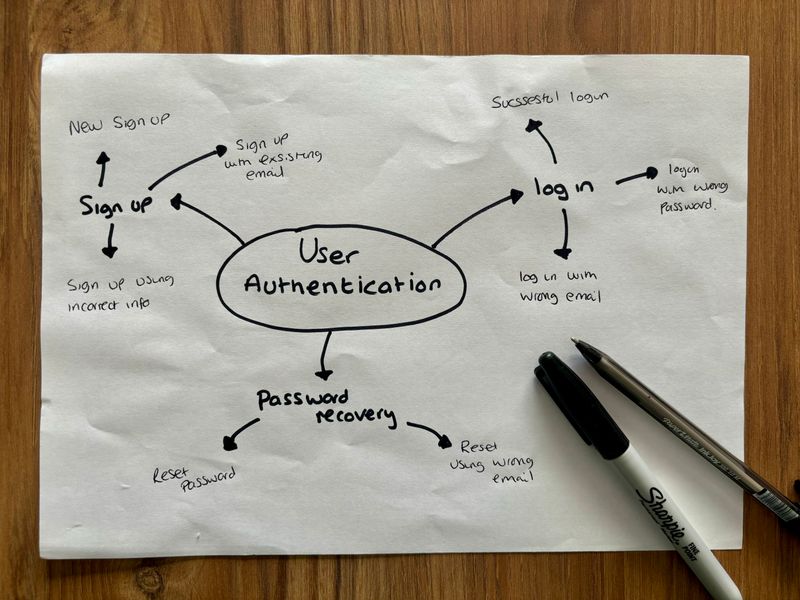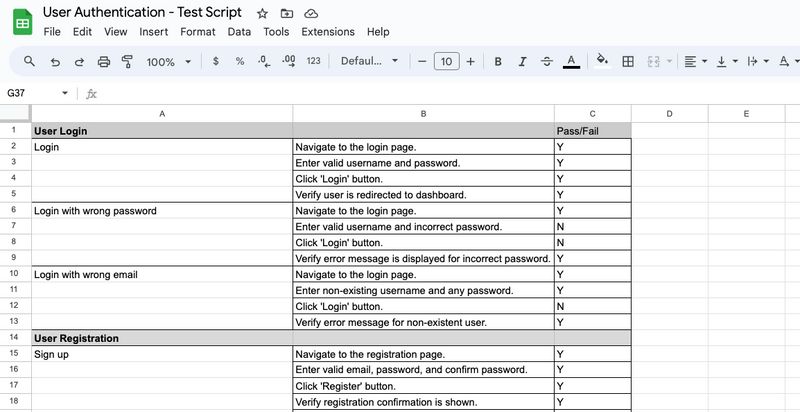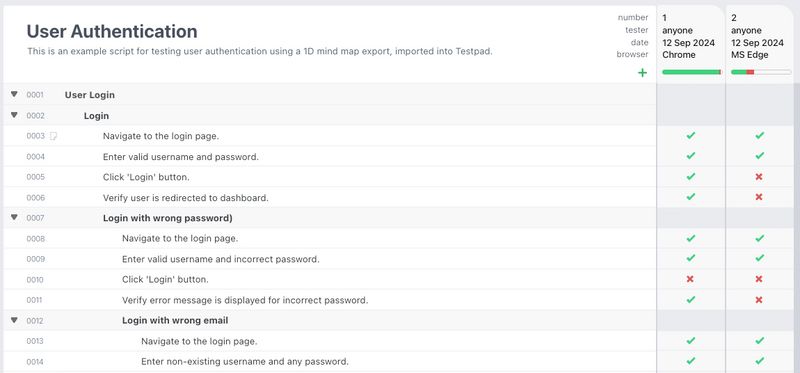Mind Maps for Test Planning in Testpad

Mind Maps for Test Planning in Testpad
Creating a test plan from scratch can be overwhelming. Without a clear structure, you risk missing important scenarios or leaving gaps in your testing. Mind maps offer a simple, effective way to visualize and organize your test planning, ensuring thorough coverage.

hen creating a test plan from scratch, you’re likely going to need a structure or tool to help you design a thorough testing process. The ambiguity of not knowing where to begin can be challenging. Without help it can lead to incomplete test plans, overlooked scenarios, and ultimately, embarrassing gaps in your testing that customers might find.
Mind maps make an excellent methodology to create a plan that takes your testers across everything you want to cover in testing, thus giving you the best chance of discovering as much as possible about how ready your software is (or not).
Mindmapping doesn’t need to be limited to a 2D format on a big sheet of paper. We’ll explore how to build them as a 1D outline that gets increasingly more detailed as you iterate your plan, and show how easy it is to use mind mapping strategies in an agile test planning tool like Testpad.
What is Mind Mapping?
Mind maps are a visual way to represent ideas, information, or tasks. They are a graphic representation of hierarchical concepts; a way to organize thoughts.
If you were to imagine a mind map you might conjure up images of a classic whiteboard. You’d start with a central idea in the middle connected to different bubbles of ideas, with those ideas spawning off into the next related idea.
At each node in the diagram, it's easiest to brainstorm “what should we be thinking about for this item”. At this point you know you don't have to dive into all the other nodes yet because you're focused on a singular point. But, of course, if you do think of something random from elsewhere, you can add it to a relevant next node.
Every connected thought or piece of information becomes a thorough exploration of an idea – the perfect foundation for a test plan.
Why Mind Mapping works for Test Planning
Drawing up a test plan, or a list of things you don’t want to forget during testing, can be daunting. You’ll want to cover all potential outcomes: testing everything that was specced, and everything that wasn't but could be reasonably expected or anticipated by your users.
Mind maps offer a great solution for exploring the expected and potentially unexpected behaviors of your product. And they're great in several ways:
Visual Clarity: Mind maps provide a clear and visual representation of ideas, making it easier to understand the structure and visualize coverage.
Improved Organization: They help in organizing thoughts and tasks logically, ensuring that no important aspect of the software is overlooked.
Enhanced Creativity: The non-linear format of mind maps encourages creative thinking and allows for brainstorming different scenarios and test cases.
Quick Modifications: Mind maps are flexible and can be quickly updated or modified as new insights or requirements emerge during the planning phase.
Broad Overview: They provide a comprehensive overview of the entire testing process, helping to identify potential gaps or areas that need more focus.
Time-Saving: By visually organizing information, mind maps can help speed up the planning process and make it more efficient.
Simply getting started can be one of the toughest parts of test planning, and a mind map can be just what you need to get you off the ground. Offering you a starting point and just enough structure to give you the confidence to press on with putting pen to paper.
The mind map methodology is helpful, but you may be wondering: how can I actually use mind maps to build test plans that aren't drawings on big sheets of paper?
Making the Most of Your Mind Map: Going “1D”
In all the discussion we’ve had about mind mapping, we’ve been referring to a “classic” 2D format—an expansive diagram with interconnected nodes representing related ideas.
It's ideal for brainstorming when first starting out, but when trying to use a 2D whiteboard scribble as the basis for a test plan, it becomes difficult to convert that into something that will collect test results, let alone be re-usable next time.
This is where you might consider building text-based hierarchical outlines – essentially "1D mindmaps" – instead.
Just as if you made an export from a mind mapping tool, you'd get an outline list (in text, XML etc) of nested items. With that, you’d put these into the column of a spreadsheet (or testing tool) and collect results in columns to the right.
Mind Mapping Tools: 2D vs. 1D Options
2D Options

Numerous free tools like Miro, Canva, Figjam, and ClickUp allow for creating 2D mind maps.
These tools are great for the initial stages of test planning, providing a visual layout of ideas and scenarios. These mind mapping tools make it easy to collaborate with a team and allow everyone to contribute to their own sections of the plan.
Worth noting, most of these tools can export mind maps into an outline-structured text (1D) that can be used in a testing tool or spreadsheet.
1D Options

You could argue that Spreadsheets are the original test planning tool. They’re the ultimate blank slate for organizing a test plan (or really any data for that matter, it’s a blank sheet of rows and columns after all!)
A spreadsheet can be adapted to mimic a 1D mind map by creating a linearized test plan, though with all the freedom they afford, you do experience some important limitations:
Difficult to Build an Outline Structure: Within a spreadsheet it’s hard to make indented rows. Every row in a spreadsheet is just a row that's the same level as the one before it, so it’s harder to maintain a hierarchical structure of information that mimics a mindmap.
Manual Effort for Consistency and Formatting: Building and maintaining a test plan in a spreadsheet is labor-intensive when it comes to formatting information and being consistent with updated information and results. The manual nature of spreadsheets requires managerial oversight and a game plan for keeping information up to date.
Lack of Professional Reporting: If you’re testing, odds are you’re sharing results with team members and stakeholders. Spreadsheets may not be the easiest to navigate, most professional looking option when it comes to sharing reports with stakeholders who need to weigh in on testing results.
Disjointed System: Information can become fragmented across multiple spreadsheets and software, causing friction and inefficiency in the testing process. If a spreadsheet is lost or the one person who manages the test plan in a spreadsheet quits, you could lose your test plan altogether.
Introducing Testpad: A “1D Mind Mapping” Tool Perfect for Test Planning

Testpad is a test planning tool that builds test plans as outlined structured hierarchical lists – exactly like a 1D version of a mindmap.
As you type, you are essentially building a one-dimensional mindmap, starting with high-level concepts and iterating with more detail at deeper levels.
When you start planning in Testpad, the process begins with a short list of high-level system features or aspects. From there, it’s easy to go back and expand on any item. Simply hit "Enter" to insert new ideas and elaborate on the initial points you’ve made, allowing for iterative refinement. This flexibility means that you can always revisit sections to add more detail as your test plan evolves.
You can easily build grouped sections (just press tab/shift-tab to indent and outdent) eliminating the frustrations of spreadsheets, where pressing the wrong key can jump you to a different cell.
By creating a hierarchy of test prompts, you can break down complex test cases into manageable parts (as you might singularly focus on building out one module in a mind map).
Where spreadsheets presented challenges: lack of professional reporting, a fragmented system, and difficulties with formatting information into a mind map-like structure; Testpad inherently solves those problems: it's a single source of truth containing your test plans and results, everything is arranged and formatted with the job of test planning and reporting in mind, and is a perfect fit for mind mapping with test plans built as hierarchical checklists.
Testpad’s structure very much leans on a mind map’s ability to create overarching plans, while enabling detailed documentation and results tracking.
You can easily publish real-time reports to share with stakeholders, or even give them guest access to join the testing process. Testpad becomes the go-to homebase for all test plans and results so no important test case gets lost in a disjointed system.
In breaking down test plans into manageable sections, Testpad helps you stay organized and focused, making it easier to navigate through your testing process.
If you’re ready to get your testing underway with ease, clarity, and precision, you can try out Testpad risk-free for 30 days, with no credit card needed to sign up.
